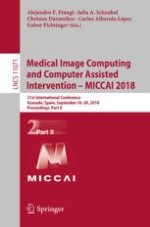2018 | OriginalPaper | Buchkapitel
Feature Driven Local Cell Graph (FeDeG): Predicting Overall Survival in Early Stage Lung Cancer
verfasst von : Cheng Lu, Xiangxue Wang, Prateek Prasanna, German Corredor, Geoffrey Sedor, Kaustav Bera, Vamsidhar Velcheti, Anant Madabhushi
Erschienen in: Medical Image Computing and Computer Assisted Intervention – MICCAI 2018
Aktivieren Sie unsere intelligente Suche, um passende Fachinhalte oder Patente zu finden.
Wählen Sie Textabschnitte aus um mit Künstlicher Intelligenz passenden Patente zu finden. powered by
Markieren Sie Textabschnitte, um KI-gestützt weitere passende Inhalte zu finden. powered by
